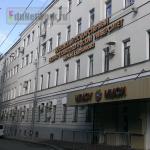Colleagues, good afternoon!
The company has several branches in different cities, all production. In connection with the entry into force of the new procedure for carrying out educational activities ( "On education in the Russian Federation" N273-FZ dated December 29, 2012; Order of the Ministry of Education and Science of the Russian Federation N513 dated July 2, 2013.), the issue of training workers is extremely urgent (increasing grades, second/related profession): if you train internally, you need a training license, otherwise we do not formally have the right to transfer a worker to a new position; if you use a licensed training center, it is expensive, and not always possible due to the lack of appropriate programs (production specifics).
Training/retraining of workers (training for second/related professions, upgrading) refers to vocational training and is subject to licensing ( “Regulations on licensing of educational activities”, “List of educational services subject to licensing for the implementation of educational programs” clause 14. Approved by Decree of the Government of the Russian Federation N 966 of October 28, 2013).
To obtain a license, according to the law, it is necessary to create a separate educational structural unit, such as an educational center/training center. While we don’t have any tasks to teach external ones, we would like to legalize our own.
Comments
0 0 0 0 0 0 0 0 0 0 0Every company trains employees. We have spoken about its necessity and tasks more than once on the pages of our magazine.
Let us remember that training at an enterprise can be unorganized (when employees themselves acquire the skills they need) and organized (when the process of advanced training is controlled by the company management).
Today we will focus on the second type of training.
There are many forms and methods of organized corporate training. One of them is a training center. In a number of companies, training centers are part of the structure of human resources departments, in others they are part of production or sales divisions, in others they exist as independent divisions.
Some companies organize training centers to continuously improve the skills of their employees as part of the preparation of a personnel reserve.
What is attractive about staff training at a corporate training center? Firstly, the activities of employees become more standardized and consistent: everyone is trained according to the same curricula, from the same teachers, and receives the same knowledge, skills and abilities. Therefore, department heads know what they can demand from their subordinates and how they can control their work. In other words, the work of employees and its results become predictable. The same mentoring as a form of training, compared to training in a training center, has a significant disadvantage: mentors do internships only from time to time, therefore they do not always have the appropriate teaching experience and do not always follow the internship program.
Second, corporate training centers are often centers of innovation.
Example 1
Collapse Show
In the federal retail chain of supermarkets, based on the training center, research is constantly being carried out in the field of improving the quality of service. Algorithms for employee behavior in standard and non-standard situations, methods for monitoring the actions of employees, etc. are being developed.
Example 2
Collapse Show
At one of the enterprises in the field of metalworking, technology improvement takes place precisely in the training workshop, where new work methods are “tested” and tested by teachers and students on training equipment.
However, despite all the advantages, creating a training center is advisable in cases where it is necessary to train a large number of personnel (for example, when hiring).
Example 3
Collapse Show
A large retail chain selling cell phones and accessories provides ongoing training for new employees - sales consultants. The program includes mastering sales technology, service standards, and product information. Training takes place on the basis of regional training centers.
In this case, organizing your own training center is justified, since the network is constantly expanding and the position of a sales consultant is always open.
Pedagogy for adults
Teaching adults is different from teaching children and teenagers. The child has his own motivation to learn “by nature.” They are interested in everything. And this must be taken into account when creating a corporate training center, developing programs and training teachers.
What is the difference between teaching children and “school” for adults?
1. Adults have certain professional and life experience and most often view learning new skills through the prism of this experience. In other words, adults already have a certain base of skills and this must be taken into account when building the learning process.
Example 4
Collapse Show
A large trading company trains operators at a training center. The program includes training new employees in computer skills, correct pronunciation, and maintenance regulations. Teacher Alina K., when starting to teach a new group, always talks with each person, finding out how well he can communicate, establish contact by phone, work on a PC, etc. This allows Alina to adjust the training program depending on the level of awareness of the students.
2. Unlike children, adults prefer that the knowledge and skills they acquire can be applied in practice. Teenagers can spend a lot of time studying the biographies of rock singers or mastering some original musical instrument, that is, doing things that do not bring any benefit. Adults have a much harder time learning because they have to see how the knowledge they gain can benefit them. They simply cannot waste time and effort studying material that they consider unnecessary.
Example 5
Collapse Show
The management of a wholesale trading company decided to invite business coach Alexey L. to work permanently as a teacher. It was assumed that Alexey would conduct periodic training of sales representatives, consultants and sales managers in customer service technologies and direct sales techniques.
After the start of a series of trainings and seminars, employees stopped coming to training, despite the fact that management obliged them to attend classes. Subsequently, it turned out that Alexey L. conducted his seminars too “scientifically”, in a theoretical manner, and the students had difficulty understanding how this knowledge could be applied “on the battlefield.”
Thus, employee training should be based on a large amount of practical material.
3. Employees in training should be able to independently evaluate their own successes and failures in training.
Example 6
Collapse Show
The training center of the retail store chain uses so-called “self-control sheets.” Each employee who improves his qualifications evaluates his level of knowledge and skills by answering the questions of a professional test. This practice of periodic self-assessment allows employees to create an optimal level of motivation to learn. After such checks, many students begin to more actively ask teachers for information of interest.
Example 7
Collapse Show
Nikolay S., a teacher in the training department of a commercial bank, while training tellers, uses a stopwatch to time the time of each operation performed by the trainees (preparing reports, issuing documents). Monitoring is carried out every day during the two-week training cycle. The results are recorded on a chart that hangs in the training room, and each worker can see how well he is progressing in mastering the skills.
4. Adults have a more complex structure of motivation for learning. Children can learn for the sake of praise from their parents or, conversely, for fear of punishment. A mature person wants, having acquired new knowledge, to increase the level of income of his family, to gain the opportunity for career growth, self-realization, and confidence in the future.
Choosing teachers
Who can be entrusted with employee training? Below we will look at the various options. And which one to choose is up to you.
Some organizations prefer to have their own employees work on the staff of a corporate training center, combining their main work with teaching. The advantage of this choice is that those who come from their native enterprise know the specifics of not only business processes, but also corporate culture. In addition, teachers are chosen from the most successful employees who enjoy authority among the rest of the staff.
Example 8
Collapse Show
In a manufacturing and trading company, the selection and appointment of teachers occurs as follows. During annual certifications, the most qualified employees with good communication skills are identified (specialists in production, sales, accounting workers, etc.). These employees are offered additional work at the company's training center. At the same time, they have the right to teach either in their free time (after working hours), or, in agreement with the heads of departments, teachers have their work schedule adjusted.
Other companies offer permanent teachers. In our opinion, this is a more convenient option, because the employee does not have to be “torn” between his main job and teaching activities. In addition, a full-time teacher has more time to prepare for classes and can engage in methodological work - draw up programs, develop methodological tools.
Let us note that the instructor must be able to perform work at the highest level and the result of his work must be a standard for students. Of course, it is quite difficult to be an ace in your specialty (this is not necessary) while teaching for a long time, but the teacher must show at least a high level of competence. This is the first necessary selection requirement for a training specialist.
Example 9
Collapse Show
Among the leading business seminars, there are sometimes teachers who can speak long and eloquently about the need for production and financial planning, teaching time management skills and personal effectiveness. But often these business coaches demonstrate by their behavior a complete failure to comply with their own rules - they are late for business meetings, act unsure in front of the audience, forget their own promises, etc. This behavior from a teacher is unacceptable. Who will take seriously the words of a man who, blushing and stuttering, teaches techniques for “confident and calm behavior in business negotiations”?
A candidate for a teaching position must have the skills to teach adults. This is the second necessary requirement. If an employee does not have special training in the field of teaching, you should not expect that he will be able to teach effectively, no matter how highly qualified a specialist in his professional field he is. For effective learning, it is necessary to know the patterns of acquisition of skills and abilities. Many people mistakenly believe that teaching is very easy, and therefore the work of a teacher in our country is far from being held in high esteem. However, the ability to teach other people requires certain qualifications and knowledge from the teacher.
Example 10
Collapse Show
There is a fairly high turnover rate among driver-instructors who teach driving. Despite good machine control skills, instructors are not always able to correctly convey the necessary information and help their students develop skills. As a result, they experience nervous stress, may lash out, shout, and, in the end, many become disillusioned with their work.
If an employee does not have teaching or coaching skills, but is highly motivated to teach, then, of course, he can be taught the teaching profession. However, it is important to determine that the employee truly has a motivation to teach and not a desire to thereby rise above his colleagues or to enjoy any additional benefits.
It is best when the organization already employs a professional business coach who can “make” an employee into a qualified teacher. If this is not the case, then the employee can be sent to study courses to train business trainers. There are quite a few companies providing this type of training. It is important that at the end of the seminars the teacher can:
- build the educational process, knowing the basic principles of adult learning,
- speak confidently in front of an audience,
- independently develop training programs,
- manage the behavior of individual members of the training group,
- independently develop methodological teaching aids.
Collapse Show
As for the teacher’s remuneration, it should be “tied” to the number of hours the teacher spends on the teaching process. In our opinion, this is the best payment option. An increase in wages occurs with an increase in workload.
Assessing the quality of work and motivating teachers
When the educational process is established and teachers have begun their duties, it is necessary to monitor their effectiveness, reward successes and identify shortcomings in their work.
What is an indicator of the successful work of a teacher (instructor)?
Example 11
Collapse Show
The management defines the quality of work of Sergei F., a trainer for a company selling cell phones, as follows: if sales volume increases in the salons where “students” work, it means that the teaching efficiency is high.
The approach to assessing learning described in the previous example is incorrect. The volume of revenue is influenced by too many “non-educational” factors - the company’s pricing policy, the quality of advertising, market fluctuations. It is incorrect to link the quality of teaching to the growth of income or profit, because a teacher can objectively “put his soul” into his work, but at the same time be unfairly assessed on the basis of supposedly “objective” indicators. A company that evaluates an employee's performance solely on the basis of profit indicators, because it can be easily calculated, is likened to a person looking for a lost item under the light of a lantern, because it is more convenient to look for it.
Example 12
Collapse Show
Some companies measure training quality this way. After completing the training course, the personnel management service conducts certification, during which the achievements of employees who have completed the training, their behavior at work, the number and quality of completed projects, etc. are assessed. If the certification results are generally positive, then the personnel training is considered successful.
The approach described in Example 12 is also unsuccessful. The teacher is responsible only for the skills and knowledge acquired by the student, but cannot guarantee their preservation for a long time. Much depends on what tasks the employee receives and whether he has the opportunity to “refresh” his knowledge. In addition, a person may know and be able to do something, but not want to do it.
Example 13
Collapse Show
The supermarket has developed customer service standards for all categories of employees: how to greet, how to talk to the buyer, how to say goodbye, etc. After the standards were developed, management assigned Oksana M., professional development manager, to train all employees in the new rules. Study groups were formed, and Oksana conducted a series of seminars and trainings.
After completing the training, a Mistery Shopping event was organized, during which the quality of service standards was assessed. The results of the inspections were disappointing: not a single employee complied with the maintenance regulations. Management concluded that the training was poor quality and blamed the trainer. Oksana M. suggested organizing an exam for employees and testing their knowledge of service standards. It turned out that almost everyone knows the technology of working with clients and knows the new rules of work.
After analyzing the situation, management came to the conclusion that employees did not meet service standards because this innovation was not supported by motivation. The employees simply did not know what would happen to them if they refused to comply with the regulations - a reduction in bonuses, dismissal, verbal reprimand, or something else. The second reason was the mistake of the employees’ immediate supervisors (heads of trade departments, sectors), who simply did not demand strict adherence to quality service standards from their subordinates.
So, what is an indicator of the quality of a teacher’s work? Of course, this is the amount of knowledge and skills of trained employees, but measured directly after the training course. But the teacher can no longer influence how the acquired skills are applied and how well the employee can retain them in his head. The best form of control in this case is an exam. And the requirements for knowledge and skills should be reflected in the training program.
We create a training program
Why are training programs needed?
Firstly, so that the learning process does not depend on the training staff. In the absence of a teaching standard, teachers can place emphasis differently and subjectively assess students' knowledge. In addition, there are often cases when, due to the dismissal of a teacher, the work of the entire training center stops, because no one else can teach except this person.
Secondly, the curriculum is the educational standard of the organization, which also contains a list of requirements for the level of knowledge, skills and abilities of students.
Thirdly, the curriculum is a set of ready-made instructions for the teacher of the training center.
Show4. Lesson plans (plans for each lesson).
A corporate training center is one of the most progressive forms of personnel training. But at the same time, it is important to remember that methods, teaching tools and the quality of work of teachers must constantly improve, quickly responding to changes in the external environment. Staff training programs must be built for tomorrow, equipping employees with the information and skills they need for the future. Only in this case will the activities of the corporate training center be effective.
How to open a training center - from idea to launch
Times of global change always provide additional opportunities for people who know how to think outside the box and see prospects where others retreat from the distance and retreat in the face of difficulties. One of these opportunities is the creation of a training center that will provide training services for additional types of activities to the population and show broad horizons in new living conditions.
Organization of a training center
To organize such a business, you must have the status of a legal entity. Depending on the planned scale, the types of activities of the enterprise are selected. If the staff includes permanent teachers, then it is necessary to obtain a certificate for the activities of the educational institution, which will entail unnecessary expenses and time delays in completing bureaucratic procedures. In the process of opening an enterprise, it will be easier to indicate the type of activity as “consulting services”, “assistance in holding and organizing events” or other streamlined formulations of KVED. And work with several independent trainers or teachers by agreement.
When starting such a business, you need to have a good understanding of the relationship between supply and demand for the provision of such services. What does it mean to have a clear understanding of where people interested in training will come from and to decide in advance on the intended coaching staff: teachers, psychologists, coaches or seminar presenters, etc. For the profitability of a training center, it is best to combine this type of activity with a leadership position in a network company or by working among people who are hungry for professional, spiritual and financial growth. This will allow you to initially have a minimum number of future listeners and provide the necessary advertising for the enterprise.
Profitability of the training center It is impossible to calculate in advance. Income will directly depend on the volume of classes provided, the cost of training and the costs of maintaining the work of the center.
The expenditure part consists of the following items:
- rent or one-time redemption cost of the premises and the costs of its maintenance;
- payment for utilities and telecommunication channels;
- the cost of the necessary furniture, equipment and equipment;
-salaries of employees and training personnel;
- advertising costs.
Requirements for the training center premises
Rent for training center premises or its redemption value may vary widely. This depends on the location of the building and the internal condition of the premises.
Establishment area is calculated based on the planned intensity of the class schedule and the number of students. The training center must have a common room with an administrator’s workplace and exits to two or more isolated training rooms. Classrooms for classes are best designed so that they can easily be transformed into a conference room; the furnishings should be mobile. It is advisable to equip the room with a projector, a teacher’s workstation with the ability to install a computer, a whiteboard or flip chart. If you plan to conduct computer courses or training to work with 1:C, it is necessary to equip a computer lab with at least 5 PCs.
The increase in attendance is greatly influenced by the location of the center close to transport communications. It is also worth remembering that a training center, which is located in a residential building, may subsequently cause negative attitudes from residents. This is due to the possibility of holding seminars outside of working hours. Such events often last until late and are accompanied by a stormy exchange of emotions among the audience.

If you have your own, suitable premises, costs will be significantly reduced.
It is also worth thinking in advance about the nutrition of future applicants. If there is no cafe, canteen or store nearby, it is worth installing at least a coffee machine in the building of the training center or equipping a special room for coffee breaks.
Training center staff
In addition to permanent or part-time teachers, the staff must include an administrator, an accountant, a handyman, and a cleaner. For small volumes, some positions can be combined. And the functions of permanent cleaners and handymen (electrician, plumber, mechanic) can be assigned to the appropriate services, which can be contacted as needed.
The key figure of the training center is the administrator, who must constantly be on site, give advice and carry out all the organizational work of the center. In addition, advertising and marketing research also fall on the shoulders of this employee. Therefore, special requirements are imposed on candidates for the position of administrator. This must be a sociable, creative, responsible person. Experience working in MLM structures will serve an excellent purpose for the administrator of a training center.
Employee salaries, to increase the profitability of the center and interest in the influx of new students, must be flexible. Consist of a clearly defined salary and bonus percentage, which depends on the number of students.
Ways to promote a training center
The center's marketing policy depends on the chosen area of activity.
The main activities may be:
- specialization in various advanced training and retraining courses, training in new professions;
- various auxiliary courses aimed at children and youth;
- conducting seminars on the topic of personal growth;
- renting out space for various events.
When focusing on professional training, it makes sense to enter into cooperation agreements with employment centers and large enterprises that need professional growth of employees.

If the educational center's activities focus on children's specialization, it is possible to advertise in the media and distribute leaflets in places where parents gather. for example, in the Houses of Creativity.
As practice shows, the most productive advertising of activities in the field of spiritual and financial growth is a personal example and speech of people who have undergone this type of training. Therefore, with this specialization of the training center, marketing activities can be limited to information meetings.
Information about rented training spaces and conference rooms can be placed in various printed publications and Internet resources aimed at entrepreneurs.
For optimal use of training center space and the fastest return on investment, it is better to combine several areas of activity. In any case, you should not expect quick and large profits from the activities of the enterprise. Such a business will be able to generate profits after some time, which will be required for its establishment. But, with proper organization of the business and passion for its occupation, a training center can become a source of profit for its owner, bring new, interesting events to life and help make useful contacts.
So, in order to study the features of this business, let’s consider the main stages and key points. We will describe the types of training centers and provide criteria for successful earnings. We will also make approximate financial calculations of all expenses and income.
Almost every modern person at different ages thinks about the need to attend various educational institutions. This is due to many reasons that are especially familiar to the residents of our country. Often the need for education is associated with obtaining a new specialty for the purpose of further employment. In addition, many people want to study this or that area for their own development and to obtain newer information that will allow them to look at the world in a new way. It is no secret that standard education sometimes simply does not provide all the necessary skills or knowledge. As a result, a person has to use the services of a variety of training centers offering high-quality educational services in one or another area of activity.
By improving their own qualifications and improving various skills, people discover new horizons for themselves and gain new opportunities for earning money. It is natural that quality education is rightfully considered a good investment in a prosperous future and financial stability. Having a coveted certificate or diploma is a very big plus in any person’s track record, because it, at a minimum, speaks of his comprehensive development and earns the respect of others. The presence of such documents in the hands of an entrepreneur develops customer loyalty and, as a result, allows for larger transactions. In fact, when working with tenders this can sometimes play a key role.
Of course, the number of training centers in Russia is constantly growing, but in general this market is quite free. Even in the largest cities there are very few such institutions. It is important to understand that most of them offer a variety of services, which allows the client to choose one or several areas to develop. Naturally, many clients come to study again to improve their qualifications or, for example, to obtain another specialty. Given such a high demand, many entrepreneurs are naturally thinking about the possibility of opening their own training center.
At the moment, training centers offering short-term educational courses are considered the most profitable, since in a short period of time each person can obtain all the necessary skills and knowledge that will be useful in the process of work. Based on this, we will consider opening an appropriate training center.
Advantages and disadvantages
Like any other business, this area of entrepreneurial activity has its pros and cons. In this regard, before starting work, it is recommended to carefully study all the features of the training center, so as not to encounter serious mistakes and not lose profit. The positive aspects of this business include:
- high level of profitability, which can sometimes reach up to thirty percent;
- quick payback period, since with proper organization and management of business, you can count on a return on all invested funds literally after six months of successful work;
- high demand for services, and the demand increases every year, therefore, if the level of courses provided is high, and the teachers are experienced and highly qualified, the training center will always be filled with clients;
- the initial investment is low, so even a novice businessman who does not have significant capital can engage in this activity;
- the ability to quickly reorient activities, since with the availability of training programs and well-established work, new directions for training can be successfully opened at any time.
The disadvantages of this work include the fact that you will have to look for reliable and highly qualified specialists. Company employees must have the necessary knowledge, since they will be required to provide quality training. To attract excellent teachers, high salaries are set for them, but this is not always possible in the first stages of a new training center.
Depending on the number of potential clients, the cost of educational services can be quite low. For example, prices can be low in small cities, but in cities with a population of over a million they can be relatively high. At the same time, it is necessary to take into account the presence of competition so that they are not within walking distance and do not provide similar services.
Like many other types of business, the performance of the training center is directly affected by financial crises and the unstable situation in the country - this is due to the fact that with lower wages and increased prices, people will spend money only on essential things.
Of course, it is necessary to provide here for the possibility of additional investments that may be required in the course of further work. Moreover, it will no longer be possible to simply close the training center, because people usually pay for training in advance (by the way, it is possible to provide for payment in installments, if necessary). That is, you need to understand that a sudden suspension of such a business can lead to serious problems. So it is imperative to foresee how and in what manner the closure of the training center will be possible, so that you can insure yourself in advance.
Concept and direction of work
Before opening this institution, it is important to decide what services will be provided there, and you also need to identify the type of concept of the training center. This directly determines which workers need to be hired to provide certain educational services. In other words, you need to decide on the specializations in which the training center will operate. As statistics show, the following areas are considered the most popular today:
- courses for marketers;
- studying various accounting programs;
- courses for managers and for people of other professions (it is possible to study highly specialized areas, for example, exclusively blue-collar professions);
- educational programs for aspiring entrepreneurs, giving them complete information about starting and running a business.
At the first stages of work, it is advisable to choose only a few of the most popular areas, which are either not provided at all by other similar organizations in the city, or these services are already provided by them, but at a fairly low level. Again, pricing matters. Perhaps it makes sense to offer more favorable prices and the shortest possible training periods. This will attract a fairly large number of potential clients to the new training center.
Once we have decided on the direction, the development of a special concept begins. The latter, in turn, must differ significantly from the operating features of the company’s main competitors, otherwise it may affect profits (we have already discussed this above). Of course, the effectiveness of its work as a whole depends on the concept of the training center. There are many different directions from which you need to choose the most suitable option:
A full-fledged training center in which clients are offered a huge number of educational services - here they may be given the opportunity to undergo training for assistants or designers, accountants, tax agents, as well as other specialists (that is, knowledge here can be given not only to beginners, but also to clients with practical experience);
An authorized center, which usually concentrates on the study of a variety of computer programs, without which it is impossible to imagine working in a particular field of activity (1C, AutoCAD, CorelDraw and the like);
Education in the form of trainings, ensuring the acquisition of not only certain knowledge, but also a positive attitude towards future activities (personal growth training, seminars on business, design and other training options);
Original courses that are not offered in other similar educational institutions in a particular city, and before offering them, a market analysis should be carried out in advance to determine whether there is a need for them, since often there is no demand for specific courses at all;
Conducting individual lessons in various subjects - this includes preparing schoolchildren for various exams, and it can also be working with students in a specific course in which they have problems.
Of course, the choice here depends entirely on the desires and capabilities of the entrepreneur. You may want to offer some new direction - there is nothing wrong with that, however, it is important that the unique training center is in demand among the local population. As practice shows, at the initial stages of work it is better to follow proven paths, which allow us to speak almost accurately about the potential demand for a particular type of service.
Separately, we can say about the selection of suitable specialists. In fact, this question is not a problem, because higher education diplomas are not always needed to work in a private training center. Moreover, the quality of the knowledge gained is of greater importance here than just the standard “reading” of the subject, as is often the case in ordinary educational institutions. That is, the client here often wants to get exactly the result, and not just a diploma or certificate. Considering that many Russian teachers are dissatisfied with their salaries, a business owner here can offer them more favorable working conditions. In addition, if possible, you can pay teachers for overtime, as well as introduce additional classes for everyone. Thus, there are quite wide opportunities for earning money here, so they can be used to their full extent.
Selecting a room
It was not for nothing that we pointed out this point at the very beginning, because to register an LLC, a company requires a legal address. It should be noted that a lot of attention is paid to this point, since it is important that the premises comply with numerous conditions of current legislation. If there are four specializations, then at least four classrooms are required, respectively. Additionally, an office is created for the director and accountant. The most comfortable hall is being created. If possible, a locker room and other additional spaces can be arranged.
Actually, the choice of premises is, perhaps, even the main issue, because today educational institutions should open in the most suitable places. Probably, the optimal solution is to rent several premises in a university or school, since in this case the entire site fully complies with the conditions and requirements that apply to modern educational institutions.
Equipment purchase
To provide educational services, you will most likely need to purchase a projector (or a large plasma panel) and tables and chairs. Computers and other equipment are also purchased that will ensure simplicity and convenience of the educational process. Teachers must have modern and relevant educational literature at their disposal, which also costs some money.
Business registration
Having carefully prepared for the opening, you can start preparing the documents. Work is only allowed officially, so business registration must be carried out. For this purpose, a legal entity is selected, since it will be important to further obtain a license to carry out educational activities - this is only possible when registering an LLC.
It is also worth considering that when registering a business, it is indicated in OKVED that the company will act as a non-state educational institution. In fact, it is recommended to indicate this status in all further contracts with clients, so that they do not have relevant questions.
As for the taxation system, in this case the simplified tax system is chosen, in which six percent is charged on the entire income of the company. By the way, to resolve such issues, it is also recommended to employ an accountant who can work both on a permanent and temporary basis (for example, on outsourcing).
An important point in registration is obtaining a license, without which it is prohibited to provide educational services. This document can be obtained from the Special Education Committee. For this, the following papers are prepared:
- special educational programs are being developed for which training will be provided;
- a statement is created indicating the list of the above educational programs, and the document also indicates other important facts about the new educational center;
- information about staffing levels is indicated, so you will have to start looking for teachers in advance;
- the maximum number of students who will be provided with services at the training center is calculated;
- documents are provided on the ownership or lease of the premises in which the work will be carried out, and it must fully comply with numerous requirements for fire safety, lighting, sanitary conditions and other factors;
- information is provided on the availability of specialized documents and books that act as a material and technical base used in the learning process;
- other information is indicated as necessary.
The written application with other documents is considered by the Committee within one month, and during this time it is strictly prohibited to work. It is allowed to open a training center only after receiving all the necessary documentation in hand.
Personnel search
Another important point when opening a training center is the recruitment of teachers. As mentioned above, their qualifications, experience and education completely depend on the direction in which the training center itself operates. The number of teachers also directly depends on the specifics of the educational center. As a rule, at the very beginning of the activity, about four different courses are selected, for each of which one teacher is hired. With the growing demand for the institution, the number of courses, and, accordingly, hired workers, can be increased.
Additionally, the staff must have a secretary who is responsible for preparing classes and communicating with potential clients, as well as an accountant who is responsible for preparing reports and calculating taxes.
Attracting clients
For a training center to generate high profits, it is important that the number of clients is large, and that the classrooms are not empty from 9:00 to 21:00. In this case, you should attract customers in different ways. For such purposes, leaflets are used that are distributed in various organizations and enterprises (possibly even specialized ones). Naturally, advertising is done on local television and their own website is created, on which each visitor can find all the information he needs about the training center.
Financial calculations
So, having dealt with the main organizational issues, let’s calculate the approximate costs required to start a business. To open a training center you will need 765 thousand rubles, of which:
- registering a business and obtaining a license – 40,000 rubles;
- rent of premises for a month – 55,000 rubles;
- purchase of equipment and literature for work – 350,000 rubles;
- advertising and other measures to attract customers – 30,000;
- employee salary per month – 250,000;
- other expenses (for example, repairs or purchase of additional equipment) – 40,000.
As practice shows, the total income per month when training one hundred people is approximately 500 thousand rubles. The net profit in this case is 110 thousand rubles. Thus, all investments will pay off here in about eight months of work. At the same time, if the number of students increases and the number of subjects taught increases, then the profit from the activity will naturally increase.
Conclusion
If you approach the issue thoroughly, then opening a training center will not be a particular problem. In addition, it can work for quite a long time. There is virtually no investment required, and the average cost of training can be quite high. Today, any sane person is ready to invest good money in their education, because without this it is impossible to imagine comprehensive development. At the same time, the training center itself can develop. As we said earlier, you can gradually introduce new directions and offer different training options to your clients. If the results are positive, the number of students will definitely grow, because here people will come based on recommendations and the entrepreneur is required to competently organize the educational process. Of course, it will be very good if you have previously worked in this field, but in general, you can successfully run such a business without any practical experience. In the end, the main work here is usually done by teachers, and a more experienced specialist can always be appointed to the position of manager.
- Today, only lazy people do not train staff. Retail chains, pharmacies, b2b service providers - everyone is equally concerned about increasing competitiveness and creating a corporate culture. Trainings, seminars, conferences are normal practice within the framework of HR policy, but since Russian business in general and the educational services market in particular are relatively young, the picture of in-house training in Russia is too varied. In large companies, students from corporate universities are preparing for their fifth to tenth graduation; in smaller players, hundreds of employees are undergoing training in training centers, and somewhere they are just thinking about creating them. At the same time, as Andrey Gromov, commercial director of MTI, notes, “there is an obvious market trend towards the growth of such intra-corporate structures. This is due to the fact that in the modern market environment the level of personnel training is an additional cost.” Building a corporate university is expensive, time-consuming and difficult. The first step towards creating a “learning organization” is opening a training center. As experts say, with the right approach and at least $100 thousand, this is not at all difficult to do.
We didn’t go through this, we weren’t asked this
If you're looking centuries ahead, grow people.
Chinese wisdom
The Komus company today operates two specialized training centers. The first, Training Center "Stimul", created about two years ago, is engaged in practical training of corporate employees - sales representatives. The second, Training Center "Start", was launched on April 1, 2004 to train employees of the transport and forwarding service. “Both the first and second centers are being implemented as part of the Corporate Universities program, which is aimed at improving the quality of staff training, introducing proprietary customer service standards and creating a continuous system of internal training,” says Andrey Nazarov, the company’s HR director. “Back in 1997 g. we came to the idea of the need to train employees: the company was growing rapidly and needed an increasing number of workers, and the staff grew to 1000. However, we were faced with an objective difficulty: the specialists brought in from outside did not know the specifics of the office goods market, did not have ideas about corporate technologies, the traditions of "Comus". Time told us that, for example, middle managers needed three to five months to adapt before they began to work effectively. The problem could be solved by standardized training in the specifics of working in our company and at the market as a whole."
There can be many reasons for opening a training center. Thus, Rosgosstrakh cites among the main reasons the urgent need for a centralized system of personnel selection and training, the need for radical improvement of the qualifications of insurance agents and specialists. And if we take into account the lack of ready-made, high-quality training programs on the market that meet the needs of the system, and the existing shortage of “practitioner” teachers, then the creation of an internal structure that solves the problems of corporate training looks quite logical.
However, is it really necessary to create a structure, look for separate premises, hire a staff of teachers, develop curricula, when there are a lot of external providers of educational services around? As the practice of companies that have opted for in-house training shows, a “pocket” training center has a lot of advantages: mobility, flexibility of the learning process, specialized programs focused on solving corporate problems (in other words, first-hand experience), and the possibility of “additional training” of internal teachers to the required level, and, finally, cost savings. Initially, creating your own training center using internal teachers is cheaper than hiring an external provider. It is not difficult to calculate the scale of savings: a day of training in Moscow costs 1.5 thousand dollars, approximately the same amount a full-time business coach receives per month.
Price issue
Sergei Pyatenko, director of the FBK School of Economics and Law, does not see any particular difficulties in opening a training center. “The registration procedure is standard - like any institution, a separate legal entity, plus an educational license. We chose the NOU (non-profit educational institution) form, but this is perhaps not so important.”
“Our training center, as in most cases, is a division of a company, and therefore no registration is required at all: the center is simply not an educational institution. However, our company has the necessary licenses to train those wishing to work in the stock market,” says Andrey Shulga, specialist at the Finam investment company. However, according to a completely official document, namely Art. 26 of the Federal Law “On Education” No. 3266-1 of July 10, 1992, training centers specializing in advanced training for employees and specialists are included in the system of additional education and are educational institutions for advanced training.
“Registration is not required when a training center is created for the needs of the company and is aimed at free professional development of employees. If the company intends to provide educational services on a commercial basis for external students, then registration and obtaining a license is a mandatory procedure,” explains Oksana Zhabina, director of to the personnel of the company "Formula Cinema Management". - In this case, an agreement on the training of specialists must be concluded between the company and the students; upon completion of the training, a certificate of services provided is drawn up, and the client is given a certificate, which indicates the specialty received and the duration of training. Initially We focused on free training for our company's employees. Soon we received a sufficient number of requests for advice from managers of regional and capital cinemas. We decided to organize training for external clients on a commercial basis. It did not take long to obtain a license - it was difficult only from a bureaucratic point of view. But re-certification (we go through it every year) has not caused any problems.”
Today there are a lot of people who want to get similar licenses and give “fake” diplomas without training, so the commission’s approach is very serious. They check whether there is enough space, equipment, which teachers work in the institution, etc. The Training Center of the Formula Cinema Management company has its own premises that allow it to train 5 thousand employees in batches. EPS FBK has four premises. According to S. Pyatenko, some meeting rooms with a shortage of space are quite suitable for the role of classrooms.
Let's assume that the need for training has been identified and the registration formalities are over. How much will it cost to have a training center within the company? “When we opened the center, we were guided by internal needs: the required capacity of the center, the number of teachers, space, equipment used. And based on the analysis, we approved the budget,” says O. Zhabina. But not every company can afford such an approach.
“The cost of opening a training center depends primarily on the costs of “education” and training of specialist teachers. For some training centers, the costs also need to include inviting external lecturers. In addition, the cost of opening a center may include rent and equipment of a lecture hall and premises for practical classes, printing educational materials, etc. It is difficult to talk about costs in dollar terms - not all costs can be calculated. On average in the market, the creation of a corporate university may require a company to cost 15-20 thousand dollars; in addition, no less 3-5 thousand dollars a month will be required to maintain the training center in working condition,” comments A. Shulga. “Total 55-80 thousand dollars annually.”
S. Pyatenko gives a different figure - no less than 100 thousand dollars per year. Let’s say that the center’s staff at the first stage consists of three coaches. In Moscow, the average salary of such a specialist is 1.5 thousand dollars, add to this the cost of a workplace (another 50%), in total it turns out 9 thousand dollars. 3-4 thousand dollars a month will cost the manager (organizer) , manager (organizer) - another 600-800 dollars, secretary - another 500. With the cost of a workplace, it will be about 13-15 thousand, and per year - about 130-150 thousand dollars. However, much obviously depends on the region . “If we take St. Petersburg and other “first-line” regions (Nizhny Novgorod, Novosibirsk, Yekaterinburg), then the pleasure of training staff on a permanent basis within the company will cost approximately 60-80 thousand dollars annually. “Second-line” regions (Vladimir, Penza ) - 30% of the amount indicated for Moscow."
As for timing, a variety of options are possible. The fact is, explains A. Gromov, that there are many ways to “set up” a corporate training system. One of them is, as they say, “from scratch,” in a company that does not have any corporate training system at all. "In this case, we start with a series of business workshops for top executives, defining strategic goals, required staff skills; then we develop modules, write programs, etc. This is a long-term cooperation, here it is worth aiming for at least two years. Another option is broadcasting training systems of the parent company, usually Western (we received a similar order, for example, from International Papers), on local soil.We adapt our programs to their needs, develop modules for the competencies, programs and trainings they created, and also provide post-training support. "The whole process takes a year and a half. Finally, another option is when we 'modularly' integrate into the established system of the corporate training system. Here we are talking about just a few months."
“It is possible, roughly speaking, to fill out documents, draw up the necessary papers, and seat students “at their desks” in three days. But if we talk about a full-fledged, and not formally functioning, educational institution, we have to set completely different deadlines,” assures S. Pyatenko.
Much in the process of creating a training center depends on the corporate culture of the company. “The company must “mature” for the training center to work effectively. At this stage of development, our auditors allocate a couple of weeks a year for training - more often this happens in the summer, when the workload is less. FBK is already fifteen years old, but this practice has existed for six years. Why not ten or twelve? We had to grow up to that,” says S. Pyatenko. Therefore, the creation of a learning organization is a natural stage of company growth. “When the company has matured, when there is an understanding that it is necessary to train employees, all that remains is to find the right person who will undertake to organize the process. In six months, he will create a working structure, select personnel, if they are truly competent specialists,” continues the expert. "In a mature company, he can effectively earn money within a few months. In a company where the manager has realized the need to put training on a permanent basis, but everyone else has not yet, it will take some time to convince a critical mass of top managers."
As with many beneficial structural changes, the first person's role is necessary but not sufficient. At Finam, requests from above and below coincided at some point. “Since the opening of a high-quality CA required the coordination of various structures and divisions within the holding, the active participation of the first person was simply necessary.” Timely initiative from above significantly accelerated the process. “The creation of the CA took about 6 months, and the same amount of time was needed to finally debug its work. Moreover, according to our data, everything worked out quite quickly,” says A. Shulga.
Friends among strangers
The main expense item of any teaching center is remuneration of teaching staff. There are several options for working with teachers: “our own” (full-time) or invited trainers. But both schemes are more often used, with some exceptions. “Cinemas are a very specific business, so our teachers are full-time employees who know the specifics of the business. There are enough internal reserves,” assures O. Zhabina. “An external trainer is often focused not only on the presentation of knowledge, but also on artistic influence. We don’t need this , since our goal is not to entertain our employees, but to fill them as much as possible with knowledge that they can use later.What a business coach will explain all day (first present the idea, then give vivid examples), we give in a condensed form for four o'clock".
The situation is the same in the Finam company's training center. “We use only our own teachers. Each of them has at least three years of successful work in the securities market and is an expert in their field,” A. Shulga shares the secrets of his work. “However, it all depends on the specifics of the company. According to our experience , full-time teachers are more effective and cheaper. Firstly, we are confident in their professionalism, and secondly, teaching itself acts as a powerful incentive for them to grow professionally. When working with outside specialists, there is always a risk of running into a “pseudo-guru” or “expert” ", pursuing only the goal of increasing sales of its own services."
However, it is impossible to do completely “without someone else’s blood”: it is known that incest ends in degeneration, so for an organization that is closed on “insider” trainers, there is a danger of boiling in its own juice. “Many companies believe that by using internal forces, they thus support the corporate culture. The coach is “one of their own,” he knows the specifics and norms and is able to convey them to the rest of the employees. Everything is true, and this is a definite plus,” explains A. Gromov - But there is a noticeable market pattern here. In-house trainers of the training center cope with their task when they teach skills (for example, sales). But as soon as it comes to end-to-end management and the management block, it is impossible to do without the involvement of an external provider. There are many reasons for this , among other things, the fact that the internal provider is not perceived by top managers, and an effective Corporate Training System (CSR) is always built “from top to bottom.” Training of mid- and senior-level specialists in the so-called management block requires a very diverse knowledge from the trainer, and not a single full-time teacher is able to provide them, so we have to turn to external providers."
FBK EKPSh uses several schemes of interaction with teachers. The lion's share of classes is taught by full-time teachers (there are eight of them in total); other employees (about 30-40 more people) are involved in teaching courses. In addition, the training center cooperates with the Faculty of Economics of Moscow State University, the Higher Commercial School of Economics, other universities and government institutions, the Ministry of Taxation, etc.
Capital to acquire and innocence to maintain
Not all companies, when opening their own training center, think about the prospects of bringing it to self-sufficiency. For some, this is fundamentally impossible - why, one might ask, share precious experience? In addition, the broadcast, according to A. Gromov, can be simply dangerous (due to the possibility of information leakage) or even meaningless: corporate standards and developments may simply not be suitable for other companies.
However, as the positive experience of existing players shows, it is definitely worth thinking about expanding the CA beyond the company. “The FBK Economic and Legal School worked almost in a non-investment mode, even at the initial stage, the first year of life ended with a slight plus, and then income gradually began to grow,” says S. Pyatenko. “And it all started with regular requests for training seminars from clients . Since this is a non-core occupation, everyone took on educational activities without enthusiasm, but at some point we realized that we were trying to get by with money, and decided to create the FBK EPS. The decision was made at a meeting of partners. Initially, we figured that we needed to work with "We have about 550 people on staff now, and training methods designed for 50 employees are no longer suitable for a company of this size. But now we have an organizational mechanism and an established system."
The training center of the Finam company was also initially oriented outward: its main purpose was and is the dissemination of knowledge about the specifics and technologies of working in the stock market. “Of course, we expect that people who have completed training will become clients of our company, but in no case do we impose our services,” says A. Shulga. “Training at the training center is paid, the price is set to a minimum. 1,300 rubles is symbolic the amount (equal to the minimum cost of opening an account) for a two-week course of educational trading, which includes both theoretical and practical classes, is sufficient to weed out not quite sane people who want to get “everything at once” without investing in it's nothing and never."
Training for “our own people” is completely free. “Therefore, training courses are interesting for employees whose activities have not previously been associated with the stock market. For example, a marketing or public relations specialist, even who previously worked in the investment field, may have a rather weak understanding of the specifics of the securities market. In order to adequately perceive and understand the company's activities, such a specialist simply needs to undergo training. And it is best to do this not with the help of textbooks on day trading, but by communicating with practitioners who successfully work in the stock market," assures A. Shulga.
"Own" universities
The Rosgosstrakh Corporate University began its work on September 30, 2003. Thirty-seven students of the first cohort underwent special managerial training during the year. Upon completion of training, each student prepared and defended a diploma project designed to make a practical contribution to the development of the company. The successes of the first year of training showed the importance and necessity of further training of managers at the corporate university, so the company management decided to continue the university training program. As a result of the announcement of the second intake, 44 new students came to study.
It has become fashionable to organize “your own universities.” Or is it necessary? One way or another, today in Russia there are corporate universities (CUs) in more than 20 large companies, including Bee Line, Severstal, Rosgosstrakh, Ingosstrakh, Rostelecom. At the same time, most of the companies mentioned have operating CAs. “A corporate university is a training center that has achieved a certain “state of mind” and consistency,” this is how S. Pyatenko defines the difference between the two structures. “All talk about the differences between CU and UC is generally “theological”, because that’s not the point essence. TC and CG, so to speak, smoothly flow into each other. Indeed, a training center, initially created to develop certain practical skills among certain categories of key employees, as the company develops, can grow (and, as a rule, grows) into a corporate university."
In general, experts tend to indicate the difference in the scale of tasks (TC - tactical, CG - strategic) and orientation on the time line (TC records and transmits accumulated experience, and CG is a structure aimed at the future, its task is to somewhat anticipate events) . “A corporate university is a system that is built on the basis of the strategic goals of the company,” assures A. Gromov. “Training is based on what skills and knowledge we must provide to achieve the strategic goals of the company. A training center is, rather, a set of specific educational programs focused on specific skills depending on the position. Manufacturers, and even large trading companies, opt for a corporate education system (CES), not limited to the creation of educational centers. CES comes from the goals, it gives employees a unified conceptual apparatus; regardless of the level of training "They are provided with a standard package of specific and necessary skills and knowledge. It is these skills that help develop a common language for the company." By speaking this language and knowing that the other side will hear you, management can more likely achieve their strategic goals.


















